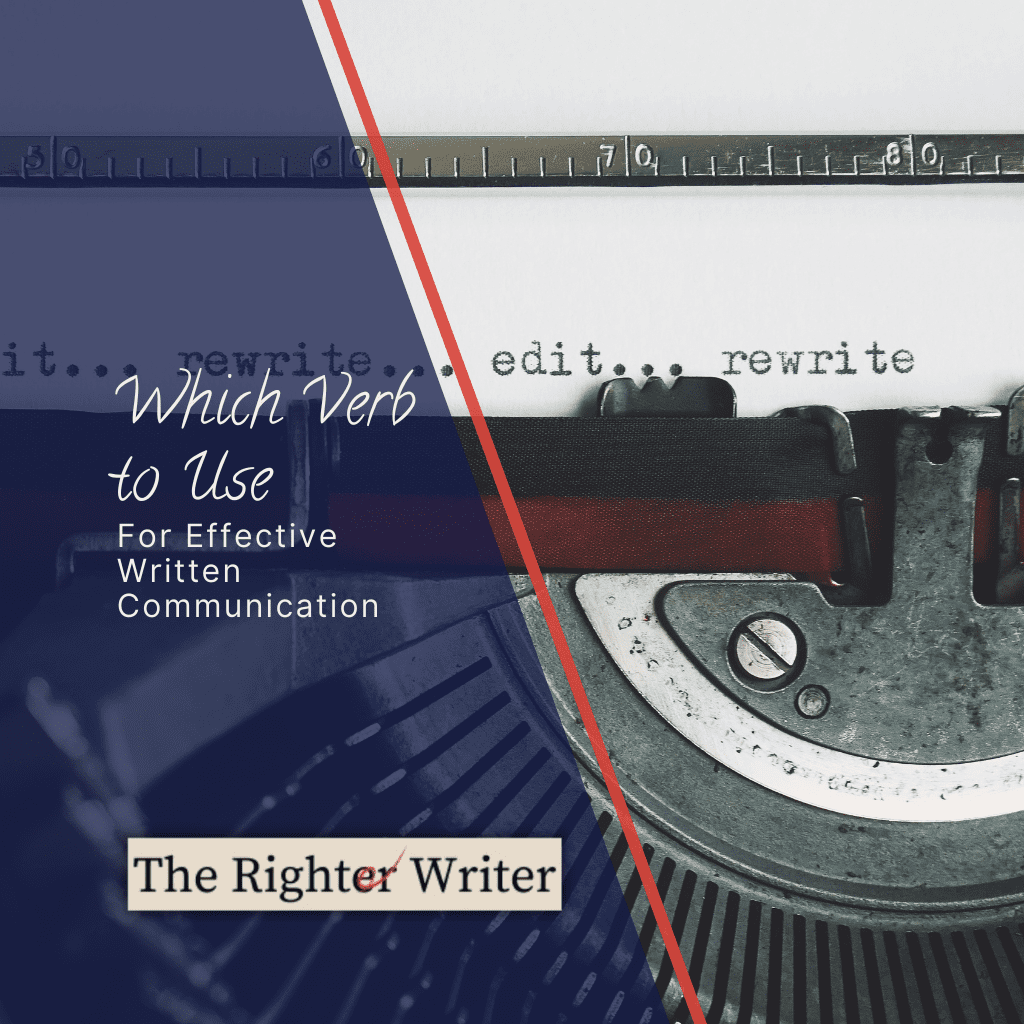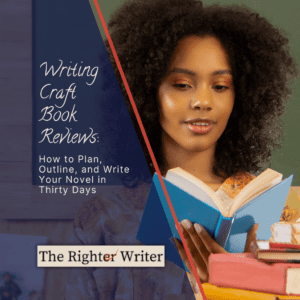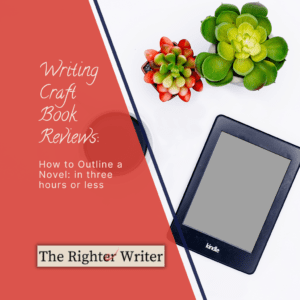
Writing Craft Book Reviews: A Book A Week
Fourth and last (for now!) in our series of book reviews featuring Kindle Unlimited books that explain ways to outline a novel. Let’s get ready for NaNoWriMo!
I'm an affiliate.
Some of the links on this page are affiliate links, but the opinions in my posts are my own, and I only mention products that I like and use myself. As an Amazon Associate, I earn from qualifying purchases. What that means is that if you click one of the links on my site and make a purchase, I might recieve compensation at no extra cost to you.

Verbs are the heart of a sentence—without them, you simply have a pile of words.
It’s the verb that tells us what the subject is doing or has done.
Depending on the specific context, verbs can perform a whole host of different functions within a sentence.
In some cases, they might simply indicate an action taking place, as in I eat breakfast.
In others, they might be used to express a state of being, as in I am hungry.
Verbs can also be used to describe sensory experiences, as in I feel cold.
In each of these examples, the verb serves a specific purpose that helps to convey the precise meaning of the sentence.
As such, it is clear that verbs play a vital role in ensuring that our communication is specific and precise.
Without them, we would struggle to communicate our thoughts and experiences effectively.
Let’s look at the different types of verbs and what they are used for:
There are three main types of verbs: action verbs (these can be either transitive or intransitive), linking verbs, or helping verbs.
Action verbs fuel our sentences and give them direction.
They come in two varieties: transitive and intransitive.
What’s the difference between a transitive and intransitive verb? It’s all about action and who is doing what to whom.
Transitive verbs take an object—they’re the verbs that describe what the subject is doing to something else.
Take the sentence:
She gives.
It doesn’t sound complete, because the word gives is a transitive verb and needs an object. She gives . . . what?
She gives a book.
That sounds better, right?
Here, the subject (She) is taking action (gives) on the object (a book). The transitive verb has its object, so it sounds finished.
(As an aside, book is a direct object here. You can also add an indirect object: I give a book to Elsa.
But that’s not really a conversation about verbs, so I’ll save it for another post!)
Intransitive verbs, on the other hand, don’t take an object—they describe the subject doing something without affecting anything else.
He sleeps.
The subject (He) is taking action (sleeps), but there’s nothing else involved. He’s not doing anything to something, therefore there’s no object required.
So, if your sentences feel unfinished or incomplete, check to see if the verb you are using needs an object to act upon.
A linking verb is a verb that connects (links!) the subject of a sentence to a noun or adjective that gives information about the subject.
The most common linking verb is the verb to be.
He is a nice person.
The words seem and become are the other words that are always linking verbs.
He seems like a nice person.
He will become a nice person.
Sometimes a word can be an action verb in one sentence and a linking verb in another. Think about the word smell.
I smell a flower.
In this case, smell is an action verb—something that I am doing.
The soup smells delicious.
Here, though, the soup isn’t doing anything. The word smell is linking the subject (soup) to a word that describes it.
Other words that are sometimes linking verbs include: appear, feel, grow, look, remain, smell, sound, stay, taste, and turn.
Linking verbs are essential for forming complete sentences; however, they can sometimes be tricky to identify.
In order to spot a linking verb, look for a verb that does not express action and that is followed by a noun or adjective.

The last group is the helping verbs.
So what exactly is a helping verb? As the name suggests, it helps to provide additional information about the main verb in a sentence.
Helping verbs are added to the main verb to show when something is happening, or if it is even possible.
For example, the helping verb “can” indicates that something is possible:
I can ride a bike.
The helping verb “will” indicates that something is going to happen in the future:
I will ride my bike tomorrow.
And the helping verb to be indicates what is happening right now:
I am riding my bike.
As you can see, helping verbs are essential for creating complete sentences. They provide information about the main verb that would otherwise be left unsaid.
Many people think that there are only three verb tenses in English.
Actually, though, there are six common tenses, each of which has a specific function. (There are some less-common tenses, but they’re too much to get into in this post.)
Here is a brief description of each of those six.
The simple present tense is used to describe habitual actions or states of being, as well as to describe facts and universal truths.
They fight. (It’s something that happens a lot, an all-the-time thing.)
Sound travels. (It’s a fact.)
They are loud. (It’s a state of being.)
The present progressive tense is used to describe ongoing actions that are happening right now.
They are fighting in the other room. (It’s happening right now; you can hear them.)
The present perfect tense is used to describe past actions that have relevance to the present moment.
They have been fighting all morning. (They started in the morning and continued to now.)
The past simple tense is used to describe finished past actions.
They were fighting yesterday, too. (Yesterday is over, so this is the simple past.)
The past progressive tense is used to describe ongoing past actions.
They had been fighting for two hours when the neighbors complained. (The fighting was going on for a length of time in the past and then finished in the past.)
Finally, the future tense is used to describe future actions.
Most likely, they will fight tomorrow, too. (It hasn’t happened yet, but it will in the future.)

All of the six tenses have their places and jobs, but the major choice for you, as an author, is between telling your story in the present tense or the past tense.
Depending on the type of story you want to tell, verb tense can have a big effect on your reader’s experience.
For example, using first person present tense can help create a feeling of immediacy. The reader feels like they’re right there with you, experiencing everything as it happens.
Middle grade and young adult novels are written this way more often than, say, cozy mysteries or romance novels meant for adults.
Personal stories and memoirs are almost never in the present tense.
You might find blogs in the present tense, like this one, where we’re talking about facts, or recipe blogs where the procedures are sometimes in present tense, like, “I add two tablespoons of sugar, but you could add less if you want.”
On the other hand, using the past tense gives the impression that the events have already happened and allows you to reflect on them more objectively.
Look around while you’re on the internet; most of the text that you find will be in the past tense.
The past tense is the traditional tense to use for stories. Think how many stories begin, “Once upon a time, a long time ago…”
Using past tense can affect the way that a story is understood and interpreted by readers, though, like creating a sense of distance between the reader and the events of the story.
Sometimes, that’s a good thing.
Highly emotional stories, where the main character is in a lot of trouble or pain and may not even survive, can be really stressful to read when they are set in the here-and-now.
In the present tense, everything is more intense and immediate, but in the past tense, there is a little space.
The reader feels, “Well, it happened a while ago, and they’re still here to tell the story, so at least I know it comes out all right in the end.” That can be very reassuring, especially if the story is particularly violent or scary.
Most novels tend to pick either past or present tense and stick to it. There are some instances, however, where it’s helpful to switch tenses within a single piece of writing.
For example, memoirs often combine elements of past and present tense in order to create a more vivid picture of the author’s life.
By switching between tenses, the author is able to convey a sense of both reflection and immediacy. The story can show both what happened in the past and what the ramifications of it are in the present. As a result, readers are able to connect more deeply with the story.
So next time you’re wondering whether to stay in one tense or mix it up, ask yourself what effect you want to have on the reader, and which tense—or combination of tenses—will accomplish that for you!
Choosing the right verb can be the difference between a ho-hum sentence and a truly engaging one.
The right verb can convey action, emotion, and even attitude. But it can be hard to pick the best verb for the job, because, unlike grammar, there aren’t any rules to follow–you just have to go by the feel of the sentence.
For example, consider the difference between each of these sentences:
I walked to the door and said, “See you later.”
I stalked to the door and snapped, “See you later.”
The first sentence is simple and straightforward but doesn’t tell the reader much about what is happening under the surface. The second sentence adds information about what I was feeling at that moment, just by switching up the verbs.
How about these versions of the sentence?
What do they tell you about the situation through the verbs I chose?
I tiptoed to the door and whispered, “See you later.”
I stomped to the door and yelled, “See you later.”
I staggered to the door and groaned, “See you later.”
I slunk to the door and drawled, “See you later.”
As you can see, choosing the right verb is an essential tool for any writer who wants to create an effective and engaging piece of writing.
In fiction, this often means selecting words that create a certain mood or atmosphere. However, in nonfiction, the goal is often to convey information clearly and concisely. As a result, many writers choose to use simple, straightforward language.
However, there’s great power in choosing specific and evocative verbs for nonfiction, too.
Consider the following three sentences that might come from a cooking blog:
Next, cut up the peppers into thin strips. (This sentence is clunky and long.)
Next, slice the peppers thinly. (Better. It’s a bit shorter and more precise. this could be a good version if the blog is for beginning cooks.)
Next, julienne the peppers. (Best! This one is clear and concise. Julienne means to slice thinly, so one word is doing the job of two or three.)
Another benefit of using just the right verb in your nonfiction is that it can establish you as an expert in your field.
Maybe the readers of your food blog don’t know the word julienne. When you use it (and then explain it to them), that shows you have the vocabulary of a professional, which creates the know, like, and trust factors that helps gain clients.
Adverbs are adjectives that apply to verbs. Verbs say what was done, adverbs say how it was done.
Let’s go back to the sentence we used earlier.
I walked to the door and said, “See you later.”
You might think that adding adverbs will make it more interesting.
I walked slowly to the door and quietly said, “See you later.”
And it does help a little, but those descriptions are still pretty generic.
Adverbs are often overused and can make writing sound dense and tedious. In particular, adverbs that end in -ly are often unnecessary.
See how the feeling changes when we ditch the adverbs and stick with specific verbs:
I shuffled to the door and croaked, “See you later.” (Uh-oh, I sound sick!)
I crept to the door and breathed, “See you later.” (Wow, that’s so quiet! Am I a burglar?)
This is not to say that all adverbs are superfluous—sometimes they can be used for effect.
Personally (see what I did there? Personally is an adverb), I use adverbs in my blog posts because I like to write the way I talk.
In general, however, it’s best to use specific verbs that convey the same meaning. This will not only make your writing more concise, but it will also make it more interesting to read.
Action verbs will help pull readers into your story or argument and keep them interested until the very end. The same tips apply to both fiction and nonfiction writing.
The present tense is more immediate, and the past tense gives the reader some distance.
If you want to make your writing more engaging, choose a specific verb and ditch the adverbs.
And if you’re still not sure how to make your verbs shine, get an editor to review your work. (Here is my contact link if you’re looking for an editor!)
With a little bit of polishing, you can take your writing from dull to dazzling.

I help authors, researchers, business people, students, and web marketers to polish their writing before they send it out into the world.

Fourth and last (for now!) in our series of book reviews featuring Kindle Unlimited books that explain ways to outline a novel. Let’s get ready for NaNoWriMo!

Third in our series of book reviews featuring Kindle Unlimited books that explain ways to outline a novel. Let’s get ready for NaNoWriMo!

Second in our series of book reviews featuring Kindle Unlimited books that explain ways to outline a novel. Let’s get ready for NaNoWriMo!

14 Responses
This is extremely helpful. I’ll be keeping this in mind the next time I’m writing 🙂
I’m glad! You’re welcome to drop a link and show me what you write. 🙂
This is so helpful! I feel like a lot of people don’t think about what type of verb to use when they’re writing. I’ll definitely bookmark this for later 🙂
It’s hard to think back to high school or college English classes, isn’t it? I’m glad this was helpful!
I forgot how much I enjoyed all things grammar. Really great information. Thanks.
Thanks for stopping by! If you enjoy grammar (and who doesn’t?!?), I have a weekly newsletter with editing and proofreading tips that you might like!
Hi, thanks for sharing this valuable content. This is really helpful for me and my students. Happy blogging!!!!
Ooh! Do you teach? What grade? I teach high school, but right now I’m working as a substitute while I work on my book. <3
This brings me back. These are great reminders and I’m glad I found your blog, it’s well written and the tips you shared will be useful for my own writing. Thank you for sharing, it was an interesting read and easy to follow along.
If you’re interested, I have a weekly newsletter that I sent out on Monday evenings. It has tips like these but in much shorter chunks. Thanks for stopping by!
Great explanation! I’ve definitely had to do some googling before publishing blog posts before. 🙂
Definitely! Do you have something like Grammarly? That will check things like blog posts or social media posts, and most of the time, it’s correct.
It’s always nice to freshen up on our grammar. Thanks for this.
Thanks for dropping by!